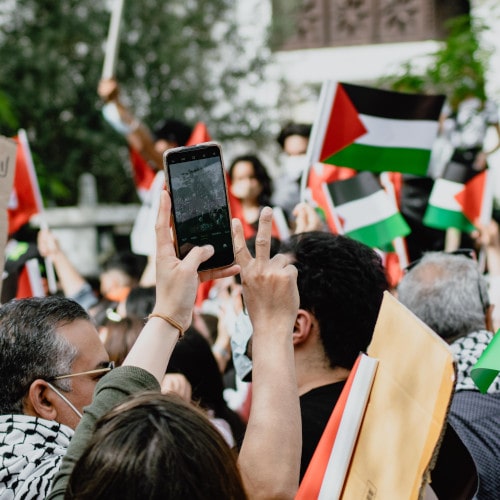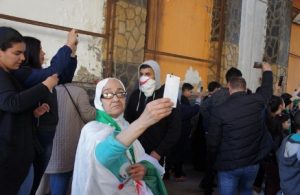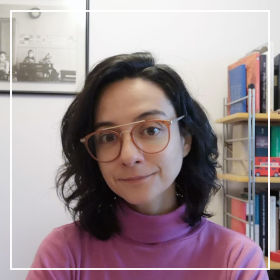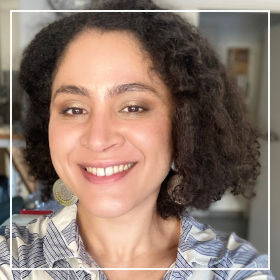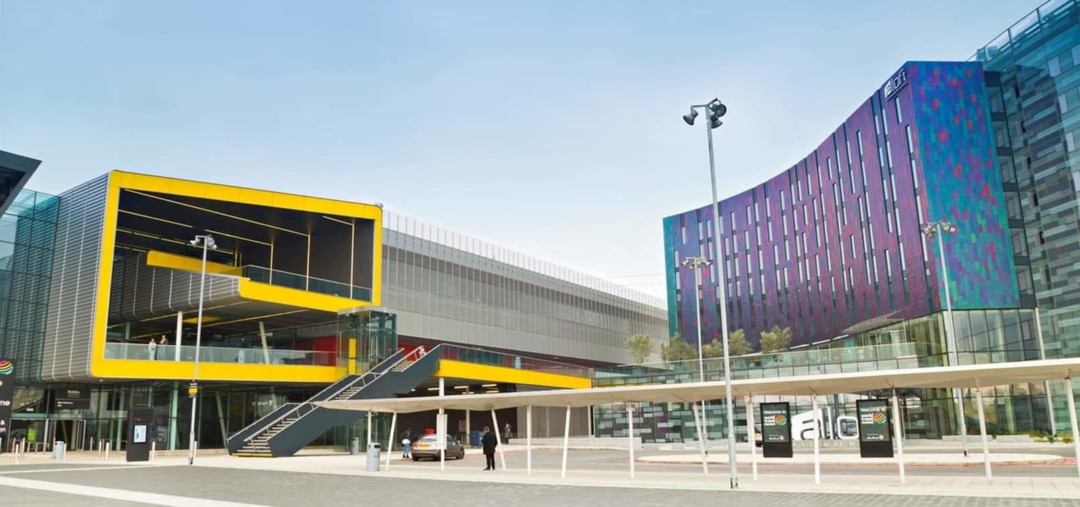For many social anthropologists working on different forms of political expression, online settings have become an inextricable part of their research sites, a trend further entrenched by the Covid-19 pandemic. In this reflection we explore what the digital means for our interlocutors, our research methods, and our participation “in the field”. Ethnographic fieldwork has been a core component of our research practice and, as engaged ethnographers, we are accustomed to documenting as well as participating in political conversations and actions. It is often in our long-term and intimate interactions that collaborative activism and research have flourished. So how does this change when fieldwork is carried out online? What can we gain from using the digital in researching political activism and struggle?
Drawing on vignettes from our own field experiences, we open up a discussion on some of the implications of doing politically-engaged anthropology across online and offline spaces in moments of heightened political unrest. We focus on collective and (in)visible organizing by looking at a range of ways in which the digital is used by activists and researchers. Specifically, we address how online spaces can be political forums, research tools, and a continuation of “in person” ethnography. We propose that both being present in social movements and engaging in protests online are two facets of doing politically-engaged research, each with different constraints and possibilities. We conclude that this is also (increasingly) reflected in the (sometimes aligned) concerns, strategies and actions of social movements and researchers.
What can we gain from using the digital in researching political activism and struggle?
Engaging the digital: a political forum
In southern Israel, Palestinian Bedouins[1] live in towns and villages popularly referred to as “unrecognized villages”, a descriptive term attesting to the fact that these settlements have been built without prior planning permission from the Israeli government. Many of these villages have existed in their present locations since well before the founding of Israel in 1948. Other villages were established by the Israeli state during, or in the years immediately after, the Palestine War (1947-1949), when many Bedouin communities were displaced from their ancestral lands and relocated to new settlements[2]. Today, building permits are almost impossible for Palestinians to obtain, both within Israel and in the occupied West Bank. This leaves them with no choice other than to construct “unrecognized” houses, which are then demolished by Israeli state forces. Bedouins now harness social media platforms, such as Facebook, Instagram and WhatsApp, to alert each other about the approach of state demolition forces. Yet social media does not only serve as an “early warning system”.
The demolitions, as well as the resulting anger and grief, are also often shared online. These digital interventions are a way to witness the destruction collectively as well as (possibly also) a way to hold the state accountable for its violent actions through the circulation of images, videos, and texts that document these violent evictions. In the struggle to withstand the physical and symbolic destruction taking place, digital spaces have become a forum for insisting upon the Bedouin and Palestinian past, present and future. Individuals’ private profiles, as well as more anonymous pages, share content related to the region in a range of languages including Arabic, Hebrew and English. A low-profile example is an Instagram page called “Al Naqab Archive” which regularly publishes historical images of Bedouin life in the region. In this context, “sharing”, like building, are attempts to resist erasure and showcase the region’s Bedouin past and present.
In the struggle to withstand the physical and symbolic destruction taking place, digital spaces have become a forum for insisting upon the Bedouin and Palestinian past, present and future.
A video of the 189th demolition of the Bedouin village of Al Araqib taken by one of the residents on 27 June, 2021.
Ethnography at a distance: a research tool
In February 2019, in the days following Abdelaziz Bouteflika’s[3] announcement that he would stand as a candidate for a fifth consecutive presidential term in Algeria, a call to oppose the 81-year-old president’s candidacy was shared widely on various social media channels. Protests spontaneously erupted in several cities in the northeast of the country, yet the bulk of the demonstrations were scheduled to take place on February 22, following the popular Friday prayer.
Farida, a political scientist and activist living in Marseille, followed the events closely. She was born in the Algerian city of Oran, where her father still lives. She felt disturbed by Bouteflika’s bid for a fifth term in office and supported the protest movement. As the mother of a 10-month-old girl, however, she could not follow her impulse to travel to Algeria to participate in the demonstrations. On the morning of February 22, Farida therefore woke up early and rushed to sit in front of her computer, opening way too many tabs. Some pages displayed national and international media outlets, while others were social media feeds. She was switching hastily from one site to the next. She followed popular hashtags such as #Notothefifthmandate and clicked on the profiles of people she knew to be politically engaged. By the time the Friday prayer ended, Farida was both excited and scared at the possibility of a mass uprising and its violent repression (though contrary to previous experiences during political gatherings, the police and armed forces did not attempt to stop the protests from taking place).
being in the “wrong place” allowed her to see and witness the protests unfolding in real time in several cities simultaneously.
Unable to attend the rallies in their actual settings in Algeria, Farida watched live videos posted on Facebook and Twitter. In the current digital moment, where activists simultaneously document and broadcast their political engagement, being in the “wrong place” allowed her to see and witness the protests unfolding in real time in several cities simultaneously. Via her computer, she “went” to Oran and Mostaganem, as well as to the capital, Algiers, where the largest demonstrations were taking place despite the fact that street protests were considered illegal (or maybe precisely for that reason). Farida followed the demonstrations in these cities through the mobile phone cameras of people she knew. She was able to contextualize political actions because of her previous fieldwork and the personal and political relationships she had developed over the years. She kept a small notebook to account for the profiles she visited and the videos and news feeds she saw. By doing so she sought to disrupt algorithmic browsing while also attempting a more systematic method of data collection.Knowing that data which is circulated online can disappear as quickly as it appears, she downloaded some of the content in order to save and later attempt to make sense of the overwhelming amount of information available.
A woman in Oran on a Facebook Messenger video call with her son who lives abroad so he can also “experience the demonstrations”. Photo by Farida Souiah, March 2019.
she sought to disrupt algorithmic browsing while also attempting a more systematic method of data collection.
The distance between Marseille and cities in Algeria might arguably be less relevant in contexts of protest movements than those boundaries that exist between online and offline spaces. On February 22, many Algerian emigrants could be “there” online and later echo the chants and slogans they had heard in Arabic and Tamazight at demonstrations they organized in Paris, Lyon, Marseille, London and Montreal. Farida’s intention to follow and document the Algerian protests spontaneously moved online when she was not able, in the moment, to go to North Africa. Most researchers and activists have shared similar experiences during the past year as travel restrictions tightened with the developing global pandemic. Unable to continue their ethnographic research as planned, many began to seek alternative ways to connect with their field sites from a distance, which coincided with more “local” activities and events becoming available online. Digital spaces became research tools for an increasing number of researchers, who also followed hashtags and individuals on social media and at the mushrooming number of online conferences and seminars, as Farida had done with the uprising against President Bouteflika in 2019.
The move online has made all of us question what being present means and how we build and sustain our relationships with our field sites and the political movements we support.
Navigating (in)visibility: a contextual online/offline continuum
Many embodied research methods rely on the physical experience of “being there”, and this may well account for a sense of loss when carrying out online ethnographic research. In this section we attend in more detail to the fact that these two spaces – online and offline – are intertwined. We propose that beyond constituting a forum and a research tool, the digital is part of (most) contemporary political struggles. However, this does not mean that online and offline realities are one and the same; one cannot be studied in place of the other. This becomes evident in another story from the Naqab region of southern Israel, where a regular vigil takes place near the Bedouin village of Al Araqib. Every week a group of activists gather beside one of the main roads leading to the city of Beersheba to protest the continuous demolition of the village[4]. A man called Sheikh Sayah is an important figure in the demonstrations. Everyone knows who he is. He does not have a social media profile, but this does not affect his central standing in the local political landscape. Quite the contrary: stylish and charismatic, his presence signals the beginning and end of each vigil, and he often features prominently in the texts, videos, and images that others share online. The offline world is no longer immune from digital footprints. There are many other activists in struggles around the world whose contextual importance is not marked by a curated digital self, although they appear in the livestreams and posts of people for whom broadcasting is an important part of protest. The capacity to contextualize what happens online ought to therefore remain an important part of engaged ethnographic work.
this does not mean that online and offline realities are one and the same; one cannot be studied in place of the other.
When thinking about digital (in)visibility, the question of who we see is not the only important thing to consider. The issue of why and to whom certain things are visible is also central. Online contexts raise sensitivities regarding the safety of both researchers and activists, alongside broader questions about impact and exposure. This is why some movements resort to more secretive mediums to circulate information and build a community. These less visible digital spaces, such as private and semi-private group chats, might be harder for researchers to access. Being engaged in movements is often the only way researchers gain access to such spaces. Moreover, because activists often use these more confidential conversations to try and avoid online censorship and digital surveillance, this raises yet more questions about how engaged researchers should make use of what they see online. As researchers continue experimenting with online ethnographic practices, many of the foundational anthropological questions around access and disclosure will need to be revisited.
Online contexts raise sensitivities regarding the safety of both researchers and activists, alongside broader questions about impact and exposure.
Conclusion
The emergence of more (online) interconnection between our “homes” and our “field sites”[5] (as explored also in this forum) allows us to critically engage with different levels of presence and remoteness in the pursuit of shared political goals, and to think collaboratively about the different parts of doing research. The move online has made all of us question what being present means and how we build and sustain our relationships with our field sites and the political movements we support. As we considered our experiences with combining online and offline ethnographic methods, our own collective reflections led us to understand online presence, engagement, and connection as complex phenomena which each allow for different tactics, resources, and strategies. We were brought back to reckoning (again) with some of the key questions regarding ethnography as a form of labour: Who engages in it? When and where is research conducted? And what and who are overlooked?
[1] Based on Maya Avis’s ethnography on Palestinian Bedouin land claims in the Naqab region of Israel.
[2] This includes villages such as Umm al Hiran.
[3] Based on Farida Souiah’s ethnographic research on Algeria’s Hirak.
[4] At the time of writing the village of Araqib has been rebuilt and demolished 189 times since 2010. The last demolition was carried out on June 27, 2021.
[5] For many ethnographers this is far from a binary relationship.
Featured Image by Latrach Med Jamil on Unsplash

